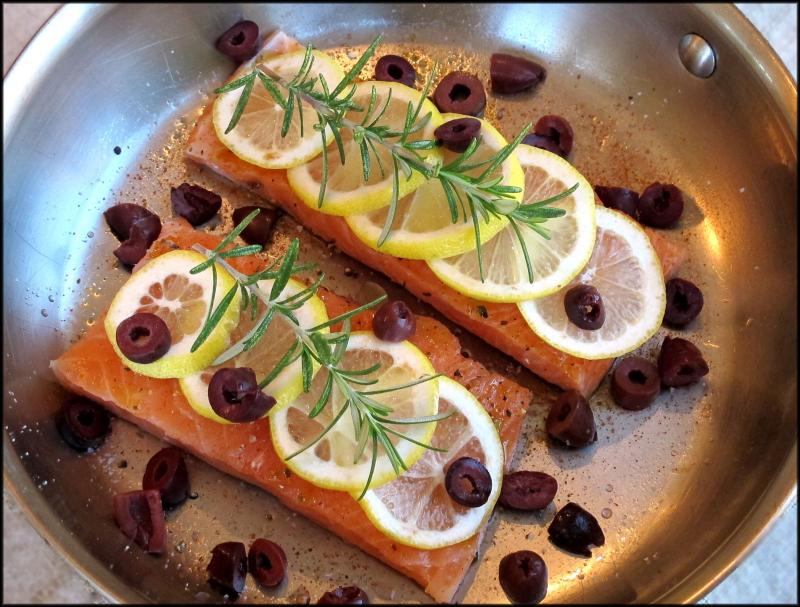Get ready for Feast of the Seven Fishes
One of the most engrossing holiday traditions I've encountered is the Italian-American Christmas Eve celebration called Feast of the Seven Fishes. Although many sources claim the practice originated in Italy, it actually arose in this country in the early 1900s. In Italy, Christmas Eve was a time of abstaining from meat while waiting for the birth of Jesus on Christmas Day.
If you're familiar with the geography of Italy, it's easy to understand why seafood is a dietary staple. And, as part of the Roman Catholic fasting rituals during certain times of the year, fish dishes were often selected to replace meat and dairy. The original native custom of choosing a simple fish such as baccalà (salted cod) for a winter meal reflects what was likely available.
How did we get from a peasant-style fish dinner to an elaborate feast of seven different fish dishes? Some have suggested that the idea of "seven fishes" originated with restaurants looking for a way to engage diners on Christmas Eve. Why seven? The number seven can be connected to multiple Catholic symbols: seven sacraments, seven days to create the world, seven deadly sins. Or maybe the seven hills of Rome?
Although the most common version of the meal includes seven fishes, some families serve 10 different dishes to reflect the number of stations of the cross. Others increase the number to 12 for the apostles or as many as 13 to include Jesus and his apostles.
Instead of a night where tradition calls for a partial fast during which no meat should be served, the focus on fish has evolved to a lavish feast. According to Mario Batali, the meal "is what Italians do when they say they're fasting." The Feast of the Seven Fishes has become a connection to traditional fish dishes and recipes handed down through generations.
The typical menu begins with a cold appetizer, followed by a hot appetizer. Next is a fried dish, a fish filet, and then a pasta dish with fish. Most traditionalists insist on including salt cod and stewed eel, while modernists may replace those with a fish soup and a whole grilled fish.
If you're interested in organizing a menu for a Christmas Eve party, consider how much can be prepared in advance (soup or stew), finished in the oven or in need of close attention at the last minute, such as deep-frying. In the sidebar, you can see Anthony Ewing's opinions on "old-school" and "updated" dishes (www.ediblejersey.ediblecommunities.com).
For the dish in the photo (captured before it went into the oven) salmon fillets are paired with thinly sliced lemons and kalamata olives. For another salmon variation, you can combine honey, soy sauce and vinegar for a sweet, salty, sharp flavor profile. If a seafood stew seems like the easiest way to go, this recipe will get you close to seven fishes. Just don't forget the cannolis.
Lemon & Olive Salmon
4 salmon filets
salt & pepper, to taste
1/2 C dry white wine
zest and juice of 1 lemon
1 T olive oil
1/3 C pitted Kalamata olives
1/4 t red pepper flakes (optional)
Preheat oven to 400 F. Coat the inside of a baking dish with nonstick cooking spray; set aside. Rinse the salmon and pat dry. Place in the baking pan in a single layer, skin side down. Sprinkle with salt and pepper.
In a small bowl, whisk together wine, lemon juice, zest and olive oil. Drizzle mixture evenly over the fish. Scatter with olives and top with red pepper (if using). Bake until cooked through, about 20 minutes. Yield: 4 servings.
Soy & Honey Salmon
2 salmon filets
2 T honey
2 T soy sauce
1 T rice wine vinegar
1 minced garlic clove
1 thinly sliced scallion
1 T olive oil
1 T sesame seeds
snipped chives, for garnish
Rinse salmon and pat dry; set aside to bring to room temperature. Whisk together honey, soy sauce, vinegar, garlic and scallion; set aside. Heat olive oil in a nonstick skillet over medium. Place the salmon in the skillet, skin side up. Cook for 3 minutes.
Turn over salmon and cook another 3 minutes. Pour sauce over salmon; cover and cook to desired degree of doneness, another minute or two. Serve garnished with sesame seeds and snipped chives.
Yield: 2 servings.
Fish Stew
2 T olive oil
1 thin-sliced fennel bulb
1 chopped onion
3 chopped shallots
1 t salt
4 minced garlic cloves
1/2 t crushed red pepper flakes
1/4 C tomato paste
28-oz can diced tomatoes
1 C dry white wine
5 C fish stock*
1 bay leaf
1 lb clams, scrubbed
1 lb mussels, scrubbed & debearded
1 lb shrimp, peeled & deveined
3/4 lb halibut, cut in 2-inch chunks
3/4 lb salmon, cut in 2-inch chunks
Heat oil in a large Dutch oven over medium. Stir in fennel, onion, shallots, and salt; sauté until translucent, about 8 minutes.
Add the garlic and 3/4 teaspoon of red pepper flakes; sauté 2 minutes. Stir in the tomato paste, canned tomatoes with juice, wine, fish stock and bay leaf. Bring to a simmer; cover and reduce heat to medium-low. Simmer about 30 minutes. Add the clams and mussels to the cooking liquid. Cover and cook until the clams and mussels begin to open, about 5 minutes.
Add the shrimp and fish chunks. Simmer until the fish and shrimp are just cooked through, and clams are completely open, about 5 minutes longer.
Discard any clams and mussels that do not open; discard bay leaf. Season to taste with salt and red pepper flakes.
Yield: 8 to 10 servings. *Note: bottled clam juice may be substituted.






















































